Hello everyone.
Today I received my 100 USD shopping cart which I received for winning first place prize in Project14 7-Segment Display with my Digitally Adjustable Power Supply entry. Thanks tariq.ahmad for sending me the shopping cart.
For selecting components, I used my wishlist which I wrote internally for remembering interesting boards and components. I note here things which I do not need immediately but they are interesting and I want to play with them sometime later. Then I converted my wishlist to excel, added prices here and attempted to solve knapsack problem.
MAX78000FTHR
The first thing which I selected and most probably most interesting (but not the most expensive!) thing in my 100 USD shopping cart which I received for free is MAX78000FTHR board. It is this quite a small board in Adafruit feather form factor:
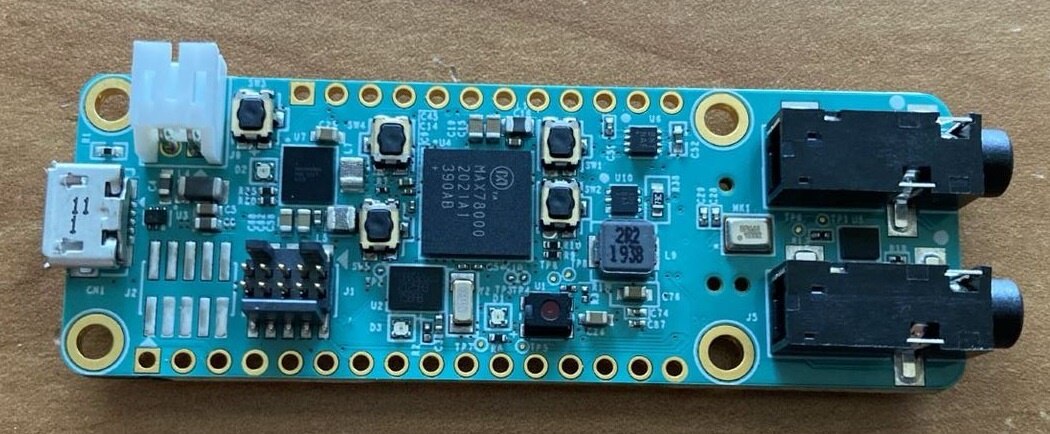
Except board package contained printed compact pinout card, legendary white strong USB cable which Maxim bundle with most of their kits and pin-headers which are golden-plated on contact area and tin-plated on other side for easier soldering. While board is small and cheap It is extremely powerful. I think it is one of the best boards with price-performance ratio. Board features very interesting MCU. This MCU have 2 CPU cores – Arm Crotex-M4 and RISC-V coprocessor. Except this CPU cores it has 64 small computing cores for accelerating neural network computations as part of CNN accelerator peripheral.
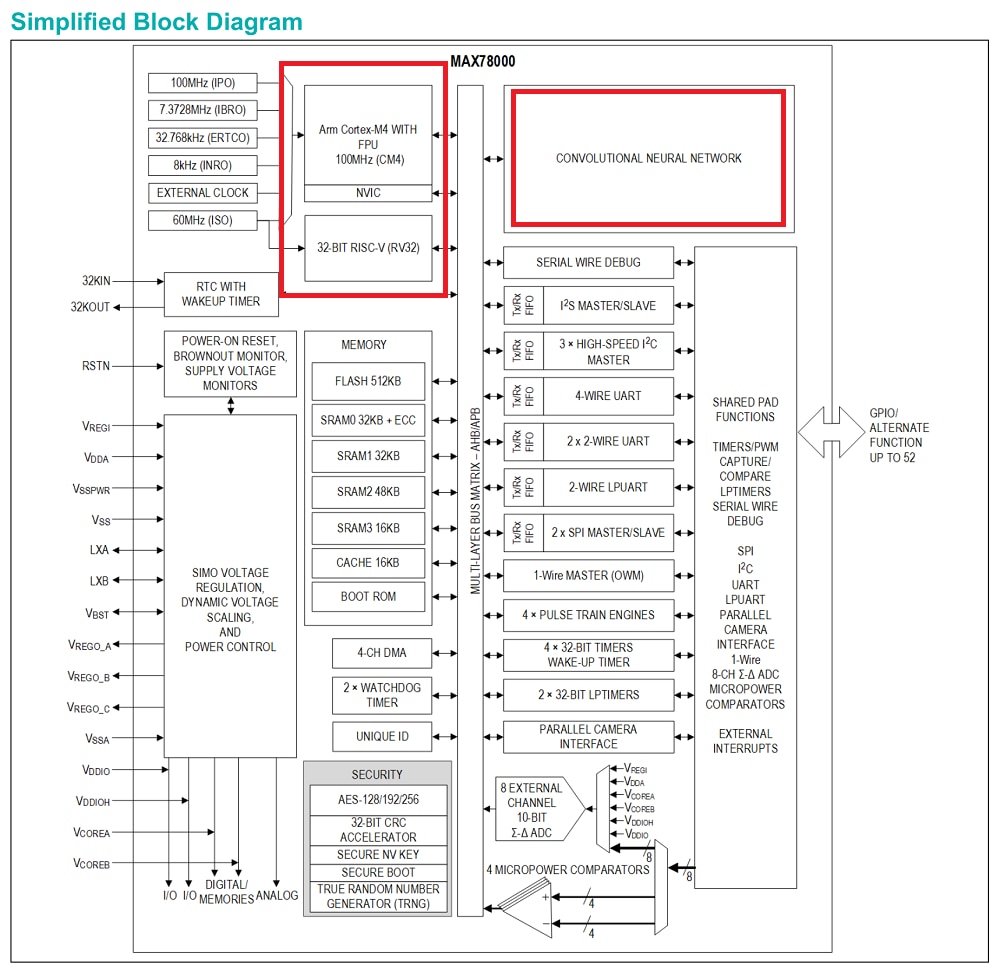
Except this very interesting MCU, board features lot of peripherals allowing to use this MCU in many interesting ways. This tiny board has camera making able to use AI accelerator for image detections. Except image application it can be used for Audio applications. Board has codec for playing or recording sound over jack connectors and onboard MEMS microphone for another possibility of recording audio without need of external microphone. Except this fantastic image and audio features board has secondary MCU acting as SWD debugger, so you do not need to use external JTAG/SWD programmer, but you can connect them if you want to debug both CPU cores independently. Another interesting onboard chip is PMIC which is used for converting voltages and also allows to connect and charge battery. At last here are 1MB (8Mb) QSPI memory, microSD card slot, some buttons and RGB led. Most of chips on-board chips are from Maxim. This board contains MAX78000 (main MCU), MAX32625 (debugger MCU), MAX20303 (PMIC), MAX9867 (Audio Codec), MAX13202 (ESD protection), MAX6817 (another ESD protection), MAX14595 (Level shifter), MAX38642 (Voltage converter), MAX38643 (another voltage converter). It is very impressive development board. One of the best which I have ever seen.
Board is preprogrammed with demo featuring convolutional network and MEMS microphone. Board “hear” for commands GO and STOP. When you say GO, it start detecting numbers and after pronouncing the digit, LED blinks number of times equal to pronounced digit. Firmware does this using convolutional network accelerator. Here you can see my first experiences with this board:
And the best thing is the price. All this mentioned above you can get for less than 30 USD. At Maxim website it is priced at 26.5 USD. At UK Farnell it costs 23.89 GBP which is equivalent of 28.23 USD at the time of writing this blog. At American Newark it costs 29.15 USD at the time of writing this blog post. All these are fantastic prices for this excellent and powerful tiny board.
Cypress SuperSpeed Explorer Kit
The second interesting thing which I ordered is CYUSB3KIT-003 from Cypress (after acquision it is Infineon).

This Kit is designed as a interface between USB 3.0 and 32 GPIOs. Usually, it is used for transferring data between some high-speed devices like FPGA or cameras and PC over USB 3.0. Main chip of this board is programmable. The good thing is that community developed open-source firmware allowing to use this board as a logic analyzer. I have cheap logic analyzer with 8 channels capable of maximum sampling rate of 24 MHz and I reached its limits multiple time. Available Open Source tools can configure this board to sample 16 channels at speed of 100 MHz. I tried it the board quickly today, but I found that Open Source tools are not as perfect as I originally expected and there are some licensing issues with licensing of firmware parts provided by Cypress. So I need to compile them manually which is not very trivial and I will spend time with this later. For now, I tested the board with Sysprogs Analyzer2Go trial version which can achieve sample rate of 216 MHz on 16 channels and works well (almost) out of box:

So, to summarize this board is interesting because it can be used for high speed transfers or it can be used as a generic logic analyzer which is fine, because for less than 50 USD this is the most cheap logic analyzer with 100 MHz sampling rate (or 216 MHz depending on SW used) which you can get or I do not know about any cheaper.
Raspberry Pi Pico (W)
Next thing which I added to the shopping cart is Raspberry Pi Pico. I added two of them: first PICO I ordered standard pico and second pico I ordered brand new W version. When I was sending my shopping cart to Tariq there were over 400 PCS on stock, but stock was exhausted very quickly and my order which I received today contained only standard PICO, so I guess I will receive PICO W later after it became available again. According to Farnell website this should happen about end of month. For now, I received original PICO. This is my first PICO, so I look forward to play with this board.
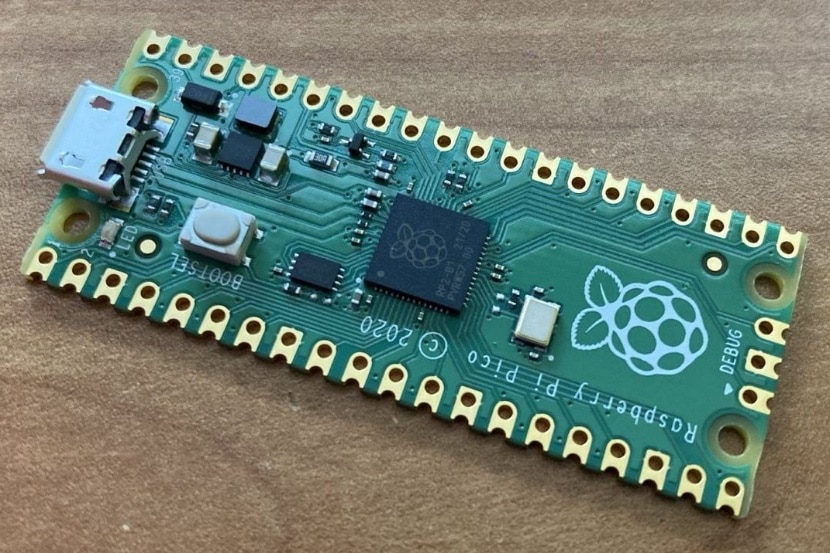
nRF52840 Dongle
The last interesting board in my shopping cart is nRF52840 Dongle with Nordic nRF52840 MCU.

This board is compact adapter which can use for basic evaluationg of nRF52840 MCU. Second possible use case (and my motivation for ordering this dongle) is a Bluetooth LE packet sniffer which is nice for debugging BLE applications. You can use this dongle for sniffing BLE packets on the air and better understand what is happening in BLE communication (and investigate why your app do not work). From the bottom of the board there is footprint for standard JTAG connector so I consider soldering this connector here and use it as a standard development platform for developing BLE applications on nRF52840 platform. On sides there are some GPIOs exposed.
nRF52840 MCU is known to me. It is the same MCU which is used on Arduino Nano 33 BLE Sesnse which I RoadTested about one year ago. If you are interesting in detailed description of this BLE capable MCU, you can read detailed review of this MCU here.
My first impressions form this board are mostly positive. USB connection is not strong but board works nice. And price is also nice. Board costs less than 10 USD which is nice price for board with this MCU and its features.
Molex connectors
I added to the shopping cart some parts which I consider using as part of Experimenting with Thermistors. I added 2 mollex 505568-0271 connectors which mates with NTC ring thermistors. I originally want to get 3 pieces (because I will soon receive 3 pcs of thermistors mating with this connectors) but I reached 100 USD limit at this time and Molex connectors are not the cheapest one. But two pcs are still sufficient to me. Currently I let them safely stored inside packaging reel and you most probably will have chance to see them as part of some blog post which I will write as part of this competition.
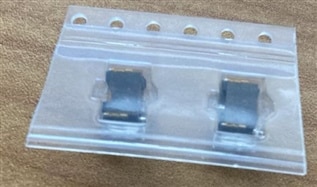
While 3rd connector did not fit the 100 USD budget, there still some cents remained. For these cents I added second item for my Experimenting with Thermistors contest entry to the shopping cart. It is (10pcs of) 4k3 resistor with 0.1% tolerance in 0603 package for more accurate temperature measurements.
Resistors
After adding accurate 4k3 resistor some cents still remained so I ordered some general purpose resistors (1% accuracy) of 4k7 (30pcs) and 10k (20pcs) values:
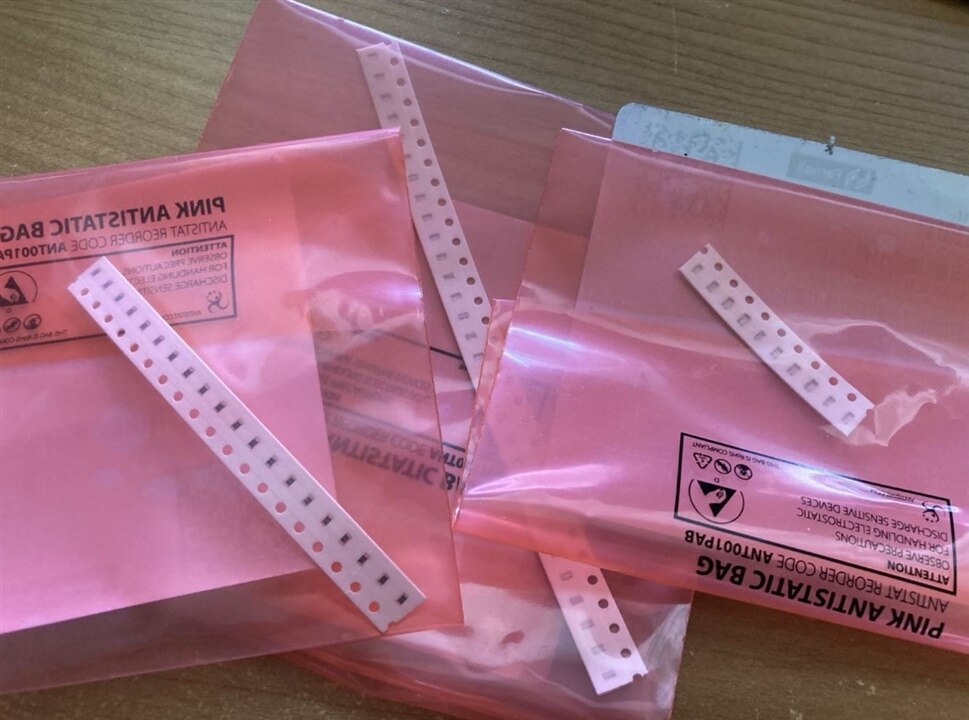
Summary
Following list contains links to all items which I ordered as part of project14 competition reward:
- NRF52840-DONGLE
- RASPBERRY PI PICO
- RASPBERRY PI PICO W
- MAX78000FTHR#
- CYUSB3KIT-003
- WF06U4301BTL
- 505568-0271
- CRG0603F4K7
- CRG0603F10K
Last words
And this is all. This is my shopping cart which I received today. Because I am from Czechia I ordered it on Czech Farnell store (I am not sure, but when I was sending shopping cart by email, Tariq most probably received email written in Czech language :D). Value of the shopping cart shown in this blog post is 2409.6 CZK which was equivalent of 99.98 USD at the time of selecting components.
Thanks, Element14 for sponsoring Project14 contest and sending me this reward for free. Thank tariq.ahmad for organising this contest. Thank all for reading this blog post. I would also welcome some recommendations for interesting things priced less than 100 USD in comments. Maybe I will apply for Project14 again later. In case of win blogs like this one from jc2048 are inspirative when selecting components. If you know about any interesting component or board for less than 100 USD feel free to comment below (or write a blog).

-

DAB
-
Cancel
-
Vote Up
0
Vote Down
-
-
Sign in to reply
-
More
-
Cancel
Comment-

DAB
-
Cancel
-
Vote Up
0
Vote Down
-
-
Sign in to reply
-
More
-
Cancel
Children